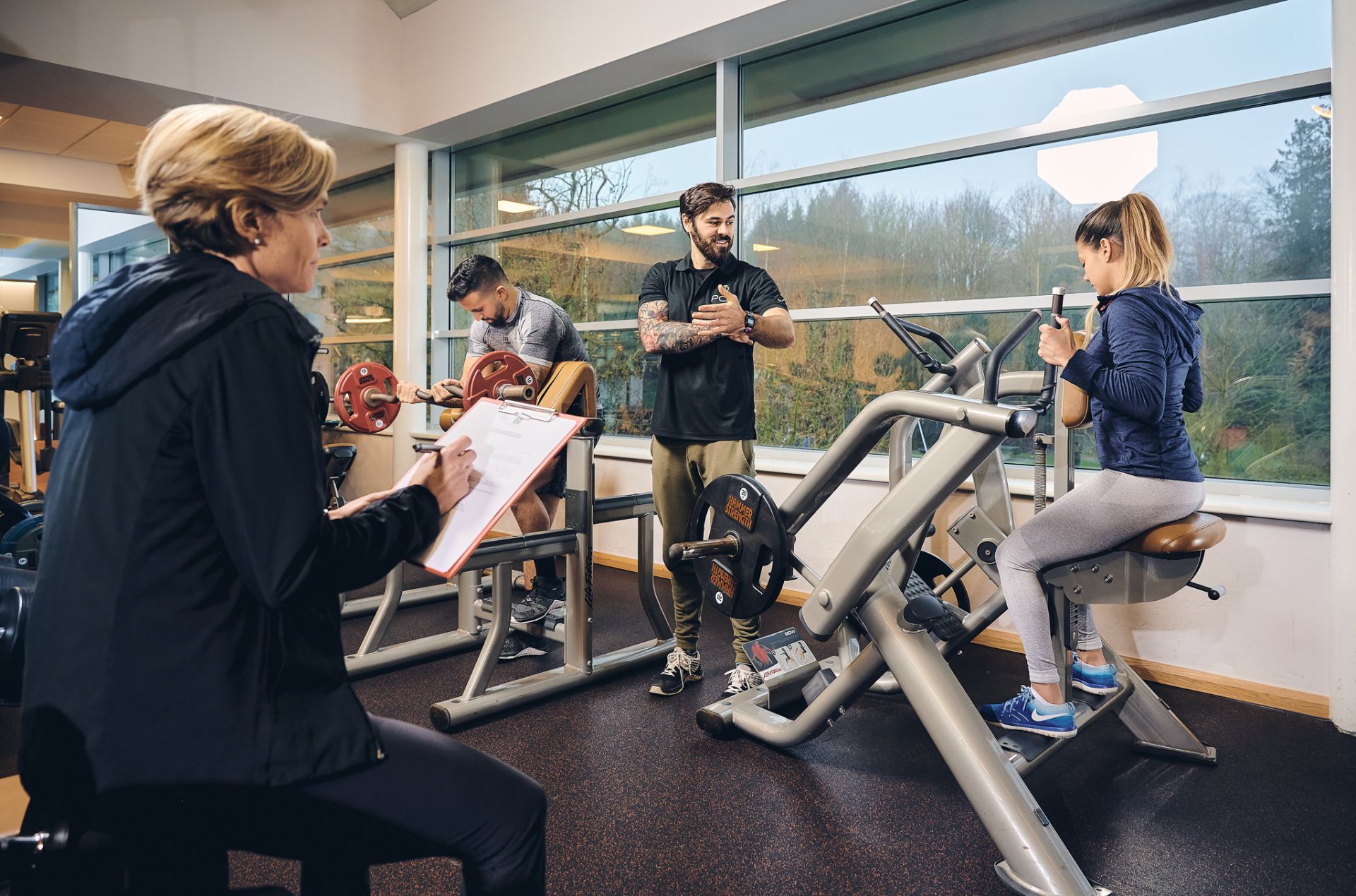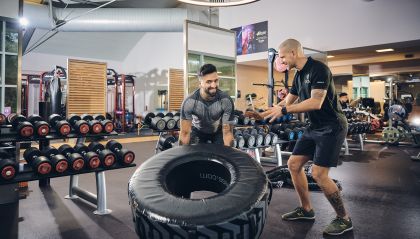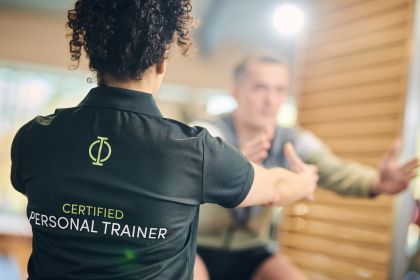As trainers and fitness professionals, it is essential to remember that every client and member we work with starts their strength training journey with a different baseline and understanding of strength training principles and best practices. Many individuals are unaware of the science behind strength training.
This lack of a more profound understanding raises the importance of incorporating education into new personnel training, client training, and member conversations. Whether we are working with a seasoned fitness practitioner who is adept at including more strength training or working with a brand new client who is new to it, it is essential to assess their baseline knowledge and incorporate educational tips that will help enhance their knowledge and further their progress.
The educational topics that are essential to incorporate within these conversations are the following. The content within this blog post is derived from principles found within the NASM Personal Training course.
- Overload
- Progression
- Specificity
- Rest and Recovery
- Nutrition and Hydration
Weight size
A new strength training practitioner needs to know when to increase the weight size clients are using and how to progress with weight size over time. It is important to educate on the importance of observation in making these assessments. For instance, a person should observe if they do not feel fatigued at the end of an exercise set with proper form (and can easily do 5-6 more repetitions) or do not feel challenged by the workout routine.
As we educate our clients, it is important to explain that this observation might mean that they are not using the most appropriate weight size and incorporate the fitness principle of progressive overload in this same explanation.
The fitness principle of progressive overload states that we need to overload the neuromuscular systems over time to create and sustain physiological adaptations from strength training. On that similar note, it is important to educate that when we strength train, we break down muscle fibers and attempt to overload this system to rebuild them stronger.
Keeping this goal in mind is why it is helpful to feel fatigued by the last repetition in a given exercise set (with proper form), be able to move less weight, and complete fewer repetitions at the end of a workout.
It would be best if you informed your new training clients that when they are using the appropriate weight size and are challenging themselves in the workout, they are likely not going to be able to strength train at the same intensity or use the same load they started with at the beginning of the exercise session. Overloading the neuromuscular system over time with the appropriate weight size helps the body adapt and rebuild stronger.
Principle of progression
It is crucial to educate on progression, which states that one should not progress any more than 10% each week in training time, distance covered, or weight used in a given exercise or activity. Sticking to the 10% rule allows for gradual body adaptions and reduces the likelihood of overuse injuries.
As you recommend your clients and members train with this 10% rule in mind, let them know not to be afraid of lifting heavier weights. However, explain to them that it is important not to sacrifice proper exercise form over an increase in weight size. Form is more important than speed or load. It is helpful to let clients know that if they are unsure whether they should progress up by 10%, they should start with a 5% increase and reassess from there.
Another helpful tip to share with new strength training practitioners is what to do when they are between weight sizes on a specific exercise. I find individuals new to strength training do not realize that if they fatigue in a middle of an exercise set and are unable to complete any more repetitions, they can quickly grab lighter weights to complete their final repetitions.
This allows them to gain additional benefits for their strength and endurance goals. When needed, utilizing this tip will eventually help these individuals get stronger and complete a full set with heavier loads. Educational tips like these might seem like second nature to fitness professionals but can make all the difference to those new to strength training as a whole.
Principle of specificity
Another critical principle to educate clients on is the principle of specificity. The fitness principle of specificity states that the body's adaptation or change in physical fitness is specific to the type of training undertaken. In other words, individuals only get more skillful at what they do and practice. As it pertains to strength training, it can be explained as individuals improve what they train for.
When I talk about the principle of specificity, I like to share a frequent question I get from members and clients, which is, “how do I get better at push-ups”? The answer is often to practice and do more push-ups since doing this specific exercise will help the body adapt to handle more repetitions and load for that exercise. Incorporating other pectoral strength movements can indeed help increase overall muscular endurance and strength.
However, to get better at a specific movement pattern or exercise, we need to practice and refine that movement pattern or exercise. For example, if a person wants to get better and adapt their body to run more, they need to run.
Fitness professionals need to educate those new to strength training on not skipping or eliminating what might be difficult for them. What is difficult for a person might be a telling sign that it is what he or she needs the most to get stronger.
As fitness professionals, it is vital to educate them on the importance of specifying doing what they want to get better within strength training. On that similar note, communicate the importance of not pushing through pain while doing what is difficult.
Rest & recovery
There is an ideal training duration length-tension relationship for our muscles. Muscles that are either too lengthened and stretched or too tight and strong can lead to physical pain and injuries.
That is why it is crucial to incorporate active recovery techniques, workouts, and rest days, like dynamic and passive flexibility, into a weekly strength training and fitness program. As fitness professionals, it is essential to educate new members and clients about the importance of rest and recovery in reaching their goals.
Make sure to educate on this topic to help reduce over-exercise and unnecessary injuries from overuse. Let new clients know that rest and recovery are where most physiological adaptations occur from strength training and are often the missing link in many fitness programs. It is essential to explain the relationship between rest and progress, and lack of rest and possible chance of injuries before it is too late.
On the rest and recovery topic, share what rest and recovery mean outside of just passive static stretches, dynamic mobility work, and foam rolling exercises. Rest and recovery also mean getting enough sleep and incorporating proper nutrition. Getting a decent night's rest of 7-9 hours each night is essential to help with the recovery process.
Additionally, taking a day off from strength training, using self-myofascial release, and making dynamic mobility and passive stretching a weekly priority are all important steps. In addition to sleep hygiene and exercise regeneration strategies, it is important to educate members and clients on the importance of nutrition and hydration while starting or enhancing a strength training program.
Nutrition & hydration
Nutrition & hydration As a fitness expert, I recommend promoting nutrition and hydration strategies that will help all individuals (not just athletes) perform well in their day-to-day and their strength training workouts.
It is vital to educate new clients on hydration needs pre, during, and post-workout. There are strategies to help make these recommendations very specific to an individual. Still, for the sake of general guidance, one should drink at least 20 ounces about 60-90 minutes before a workout, approximately 4-6 ounces (four to six gulps) every 15 minutes during the workout, and approximately 16-24 ounces after a workout.
It is important to educate members on the importance of pre and post-workout fuel in regards to nutrition. It is within the scope of the fitness professional role to share the importance of eating a healthy meal at least 2 hours before a workout.
Furthermore, if they have not been able to eat a proper meal, explain how they could benefit from eating a healthy snack about 30 minutes before a strength training session. In addition to pre-workout, talk about what they need to do post-workout and help them jump-start the recovery process.
As a general rule of thumb, share with new clients that they should eat a healthy snack (with lean protein and complex carbohydrates) within a 30-45 minute window post-workout. They should also be made aware that the sooner they do this, the better it is for their body and recovery.
Help them understand the “why” behind all this information. Share about how getting enough protein aids tissue repair and that getting enough of the right type of carbohydrates can help maximize the recovery process and replace energy stores.
Overall, it is important to keep these educational tips in mind while working with new clients. This education is essential to build a long-term understanding of strength training best practices.



